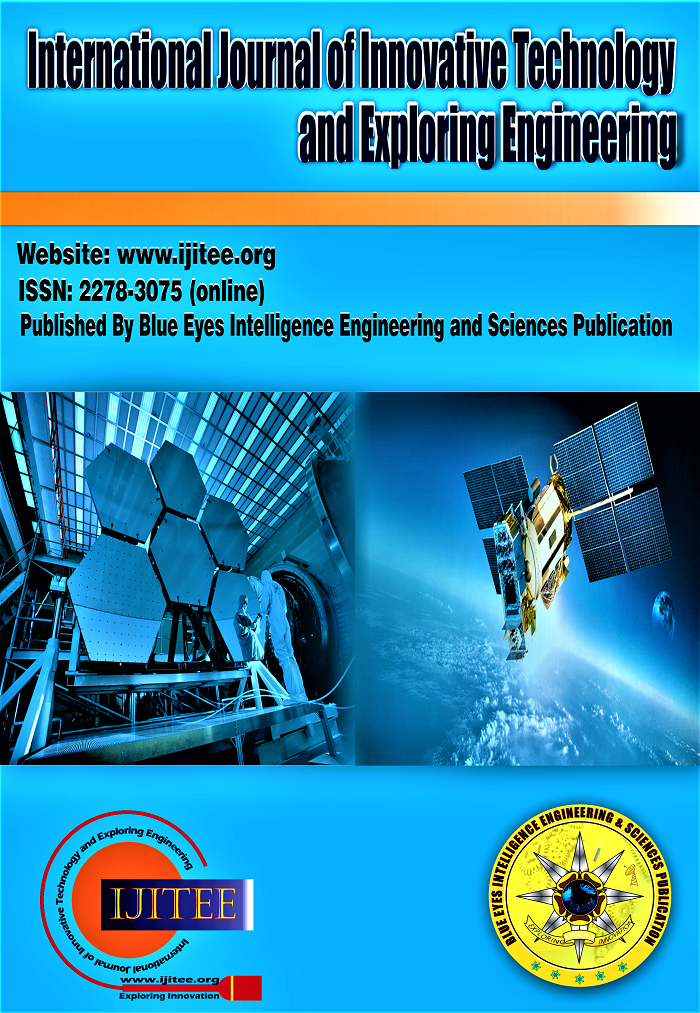Performance Analysis of MIMO Heterogeneous Wireless Sensor Networks
Main Article Content
Abstract
Wireless Sensor Networks (WSN) are widely used in remote applications related to defence and healthcare. A network with nodes having different capabilities like sensing, various computational capabilities, power-efficient communication, and a varied sensing range is called a heterogeneous wireless sensor network. Heterogeneous wireless sensor networks using MIMO wireless channels are more useful for energy-efficient multi-channel communication. MIMO applications in wireless sensor networks have the potential to enhance throughput, reduce End-to-End Delay, improve packet delivery ratios, and conserve energy in wireless sensor networks. Its implementation needs to be carefully considered in light of the specific deployment conditions and resource constraints of the network, considering proper antenna design, synchronisation mechanisms, and energy-efficient algorithms. This paper presents a comparative performance analysis of MIMO wireless sensor networks and traditional wireless sensor networks without MIMO for various Quality of Service parameters like Packet Delivery Ratio, End to End Delay, Throughput and Residual energy. The research work shows that the application of MIMO in Wireless Sensor Networks enables sensor nodes to collaborate effectively, leading to improved reliability and coverage, and also increases the network’s lifetime by conserving energy in resource-constrained sensor nodes through the preservation of Residual Energy.
Downloads
Article Details
Section

This work is licensed under a Creative Commons Attribution-NonCommercial-NoDerivatives 4.0 International License.
How to Cite
References
Abdullah Said Alkalbani; Teddy Mantoro , “Residual Energy Effects on Wireless Sensor Networks (REE-WSN)”, in the proceedings of International Conference on Informatics and Computing (ICIC), 2016 pp: 288-291 DOI: 10.1109/IAC.2016.7905731. https://doi.org/10.1109/IAC.2016.7905731
Akhtar, N., & Bhandari, A. K. (2017). MIMO Techniques in Wireless Sensor Networks: A Survey. IEEE Access, 5, 24105-24126.
I. Akyildiz, Weilian Su, Y. Sankarasubramaniam, E. Cayirci, “ Sensor Networks” ACM SIGSPATIAL International Workshop on Advances in Geographic Information Systems, Encyclopedia of GIS, 2017.
Mohammad Rakibul Islam; Jinsang Kim, “ Energy efficient cooperative MIMO in wireless sensor network” 2008 International Conference on Intelligent Sensors, Sensor Networks and Information Processing Australia , DOI: 10.1109/ISSNIP.2008.4762039. https://doi.org/10.1109/ISSNIP.2008.4762039
N. Parikh, Jayesh Munjani, “ A Review of MIMO Technology for Wireless Sensor Network” International journal of engineering research and technology, December 2013.
Nascimento, V. H., Borges, F. S., & Mini, R. A. (2020). A survey of energy-efficient routing protocols in wireless sensor networks. Computers & Electrical Engineering, 81, 106480.
P. Malleswari, G. Rao, “ An Energy Efficient Virtual MIMO Communication for Cluster-based Wireless Sensor Networks” International journal of engineering research and technology, April 2013.
Sudharman K. Jayaweera, “Energy Analysis of MIMO Techniques in Wireless Sensor Networks” 2004.
V. Stankovic, A. Host-Madsen, and Z. Xiong, “Cooperative Diversity for Wireless Ad Hoc Networking,” IEEE Signal Processing, vol. 23, no. 5, Sept. 2006, pp. 37–49. https://doi.org/10.1109/MSP.2006.1708411
Wael M El-Medany (2011). MIMO System Implementation for WSN Using Xilinx Tools, MIMO Systems, Theory and Applications, Dr. Hossein Khaleghi Bizaki (Ed.), ISBN: 978-953-307-245-6, InTech
Yi Gai, Lin Zhang, X. Shan, “ Energy Efficiency of Cooperative MIMO with Data Aggregation in Wireless Sensor Networks, IEEE Wireless Communications and Networking Conference, March 2007, DOI:10.1109/WCNC.2007.151 https://doi.org/10.1109/WCNC.2007.151
Yuyang Peng, Fawaz Al-Hazemi, Raouf Boutaba, Fei Tong, Il-Sun Hwang, and Chan-Hyun Youn, “Enhancing Energy Efficiency via Cooperative MIMO in Wireless Sensor Networks: State of the Art and Future Research Directions” IEEE Communications Magazine November 2017, pp: 47-53 DOI: 10.1109/MCOM.2017.1600837 https://doi.org/10.1109/MCOM.2017.1600837
Zhang, Y., Jiang, H., & Cheng, P. (2010). Wireless Sensor Networks: Principles and Practice. CRC Press.
Kumari, Smt. D. L., & Prasad, Dr. M. N. G. (2019). Performance of MIMO Systems Over Weibull Fading Channel using Maximal Ratio Combining. In International Journal of Innovative Technology and Exploring Engineering (Vol. 9, Issue 2, pp. 4410–4415). https://doi.org/10.35940/ijitee.b7088.129219
Kagade, R. B., & Balamurugan, Dr. P. (2020). Two Level Intrusion Detection Mechanism for Context and Trust in Wireless Sensor Network. In International Journal of Recent Technology and Engineering (IJRTE) (Vol. 8, Issue 6, pp. 65–71). https://doi.org/10.35940/ijrte.f7141.038620
R, M. C., & Ramakrishna, M. (2019). An Assessment on Energy Efficient Protocols for MANETS. In International Journal of Engineering and Advanced Technology (Vol. 9, Issue 1, pp. 1556–1561). https://doi.org/10.35940/ijeat.a1349.109119
Jenkins, J., & Ford, Dr. J. (2022). Event Study Are Effie Award Winning Campaigns Associated with Improved Stock Market Performance. In International Journal of Management and Humanities (Vol. 9, Issue 4, pp. 1–9). Blue Eyes Intelligence Engineering and Sciences Engineering and Sciences Publication - BEIESP. https://doi.org/10.35940/ijmh.d1542.129422
Rahim, N. A. S. A., & Rasam*, A. R. A. (2019). QR Code Supported GIS Web System for University Facility Damage Report. In International Journal of Engineering and Advanced Technology (Vol. 9, Issue 1, pp. 5918–5922). Blue Eyes Intelligence Engineering and Sciences Engineering and Sciences Publication - BEIESP. https://doi.org/10.35940/ijeat.a3028.109119





